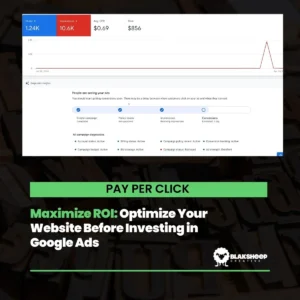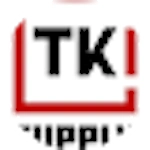Staying ahead of the curve is imperative in the ever-evolving realm of digital marketing and search engine optimization (SEO). Google, the omnipotent search engine, periodically rolls out core updates that can send shockwaves through the SEO landscape.
As of August 22, 2023, another one of these updates is making its presence known. But this time, it seems quieter than usual. If you’ve been keeping an eye on your website’s performance, you might be wondering: “Have I been hit by this Core Update?” Let’s explore the details and how you can navigate this evolving SEO terrain effectively.
Google’s Core Updates: A Brief Overview
Google’s core updates are significant changes to its search algorithm that can significantly impact search results and rankings. These updates are designed to improve the quality and relevance of search results, aligning with Google’s mission to provide users with the most valuable and authoritative content.
With the August 22, 2023, Core Update in the spotlight, webmasters and SEO experts are bracing themselves for potential turbulence in search rankings. However, it’s important to note that Google doesn’t always reveal the specific changes it makes during these updates, which can make understanding their impact a challenging task.
FAQ Schema Markup: To Use or Not to Use?
One SEO practice that has been scrutinized recently is using FAQ schema markup. This structured data markup has been a favorite among webmasters looking to enhance their search results by providing concise answers to frequently asked questions. But here’s the twist—Google has announced that it will mostly ignore this markup moving forward.
So, unless you are a high-authority medical or government site, you should rethink your efforts to mark up your FAQs with FAQ schema. While Google has yet to abandon this markup entirely, its significance has been reduced. So why the change, and how should you adapt your SEO strategy?
The Evolving Landscape of Schema Markup
To understand why Google is downplaying FAQ schema markup, it’s essential to grasp the broader context of schema markup itself. Schema markup is a structured data vocabulary that helps search engines understand the content of web pages more comprehensively. It’s a powerful tool for SEO, allowing websites to provide additional context and information to search engines.
However, schema markup overuse and misuse can lead to spammy and unhelpful search results as with any digital strategy. In the case of FAQ schema markup, Google noticed an abundance of low-quality and irrelevant implementations, which compromised the quality of search results.
In response, Google decided to reduce the importance of FAQ schema markup, especially for websites that need to possess high authority or expertise in specific fields. This move aims to filter out low-quality content and ensure users receive more accurate and reliable information.
Navigating the Core Update: People First Guidelines
With Google’s Core Update making waves, taking proactive steps to assess and improve your website’s performance is essential. Google has published “People First Guidelines” to help website owners understand what matters most during these updates.
These guidelines emphasize putting users first by delivering high-quality, authoritative, and user-friendly content. To ensure your website aligns with these principles, consider the following strategies:
- Content Quality: Review and enhance the quality of your content. Ensure it’s accurate, well-researched, and provides genuine value to your audience.
- User Experience: Focus on improving your website’s overall user experience. This includes mobile-friendliness, page loading speed, and intuitive navigation.
- Expertise and Authority: Establish your website as a trusted source of information in your niche. Showcase your expertise and credentials where relevant.
- Avoid Keyword Stuffing: Overloading your content with keywords can harm your rankings. Use keywords naturally and ensure they enhance the readability of your content.
- Engage with Users: Encourage engagement through comments, social media, and other interactive features. Building a community around your content can boost your site’s reputation.
Using GA4 for Core Update Analysis
The latest Core Update has introduced a challenge for SEO professionals—Universal Analytics, the tool previously used for monitoring and analysis, has stopped collecting data for most websites. To analyze the impact of the Core Update effectively, we now have to rely on Google Analytics 4 (GA4).
However, transitioning to GA4 has its challenges. Here are some key considerations:
Google Analytics 4 (GA4) comes with its share of challenges:
- Conversion Tracking Complexity: GA4 can be more challenging for basic conversion tracking than its predecessor, Universal Analytics (UA). Some tracking tasks, like external link clicks, are more complex in GA4, requiring users to adapt to new tracking methods.
- Data Discrepancies and Disruptions: A primary concern with GA4 is the potential for data discrepancies and disruptions. This can impact data accuracy and consistency, making it challenging for users to rely on the data for decision-making.
- Unfamiliarity: GA4 introduces significant changes compared to UA, leading to unfamiliarity among marketers and analysts. This learning curve can pose a challenge for those transitioning to the new platform.
- Usability Issues: Marketers have reported difficulties in using GA4. Even experienced advertisers have found it challenging to navigate and utilize effectively.
- Configuration Mistakes: Common configuration mistakes can hinder GA4’s effectiveness. One example is not correctly setting the data retention period, potentially resulting in data loss.
In summary, while GA4 offers advanced analytics capabilities, it presents challenges related to conversion tracking complexity, data discrepancies, unfamiliarity, usability, and configuration. Users should be prepared to address these challenges to leverage GA4 effectively.

Harnessing Screaming Frog Integrations for SEO Insights
When it comes to SEO analysis, having the right tools at your disposal is crucial. One such tool that deserves your attention is Screaming Frog. This powerful crawler provides comprehensive website analysis and integrations with various data sources, including Google Search Console (GSC), Ahrefs, and Page Speed Insights.
Here’s a glimpse of what Screaming Frog can do for your SEO efforts:
- Page Speed Insights Integration: Use Screaming Frog to identify issues related to page speed. For instance, you can find images not being scaled down correctly and take corrective action.
- Backlink Data: Access valuable backlink data to understand your website’s link profile and identify areas for improvement.
- GSC Click Data: Integrate GSC data into Screaming Frog to gain insights into how users interact with your website in search results.
- Custom Crawl: Configure Screaming Frog to crawl specific parts of your website for targeted analysis.
To get started with these integrations, download a copy of the tool on their website.
For a deeper understanding of how Google’s ranking system works and to stay ahead in the ever-evolving world of SEO, check out our comprehensive analysis of the Google Search Document Leak: Unveiling the Secrets of SEO.
Conclusion
In the dynamic world of SEO, staying informed and adaptable is essential. Google’s Core Updates will continue to influence search rankings, and your ability to navigate these changes effectively can determine your website’s success. Remember that SEO isn’t just about chasing algorithms; it’s about delivering valuable content and a great user experience.
By following Google’s “People First Guidelines,” making the most of GA4, and leveraging tools like Screaming Frog, you can keep your website’s SEO strategy in peak condition, even in the face of evolving challenges.
Unlock Success with BlakSheep Creative’s SEO Services
Elevate Your Online Presence and Achieve Unparalleled Visibility
Are you ready to take your digital presence to the next level? BlakSheep Creative brings you cutting-edge SEO services that will boost your rankings and transform your online business. Discover the power of strategic SEO – your gateway to dominating the digital landscape.
View our SEO Services Now and Set Your Brand on the Path to Success.
















































